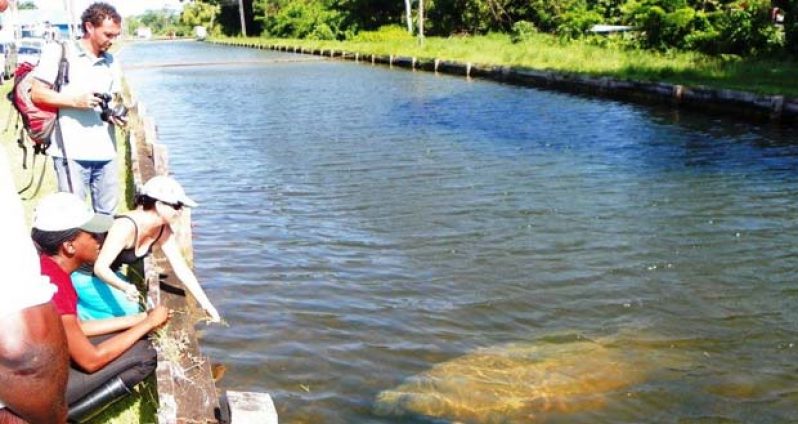-efforts ongoing to improve the manatee’s care, feeding, and enclosure conditions
Following months of negotiations, the Ministry of Natural Resources and the Environment, through the Protected Areas Commission (PAC), recently hosted a team of international manatee experts at the National Park and the Zoological Park. The Team was headed by Dr. Nataly Castelblanco-Martínez from the U.S.-based Oceanic Society and the Co-chair for the IUCN South American Sirenian (Manatee) Specialist Group, and included Mr. Boris Lerebours, a Manatee breeding and re-introduction expert from the National Parks of Guadeloupe. The team conducted initial assessments of the populations and their enclosures at the National Park and Botanical Gardens, using sonar and visual observations. Water samples were also collected and a series of tests are currently being carried out.
The initial findings of the assessment revealed that the animals are demonstrating increased reproductive activity, with five very young calves being recorded and breeding behaviour being observed during the assessment. The team also noted that Guyana is the only country in the world that has maintained a captive population or reproducing manatees for over 100 years. Descended from animals originally brought into captivity in the late 1800s, the collection of West Indian manatees at the Park and Gardens has long been part of Guyana’s natural and cultural landscape.
The PAC is now working with the team to organise a much more extensive follow-up assessment. This will aim to tag each individual animal with a microchip, conduct full health assessments, including blood sampling, establish the ages and number of males and females in the population, and carry out a genetic analysis of the population to determine parentage and the level of inbreeding. The results of this upcoming activity will then be used to create a management plan for the population, and inform the PAC’s on-going efforts to improve the manatees’ care, feeding, and enclosure conditions.
The PAC will also use the assessment to develop a controlled captive breeding programme, and a linked conservation plan for Guyana’s wild manatees, including those observed in the Shell Beach Protected Area. Once these programmes are in place, efforts will be made to acquire captive bred or rescued manatees from other zoos and aquariums, in order to bring new genes into the local population, and reduce the chance of serious genetic diseases that can result from inbreeding. The ministry, through the PAC, has been seeking the assistance and partnership of a number of international organisations involved in manatee conservation, with this visit being the first activity resulting from these engagements.



.jpg)








